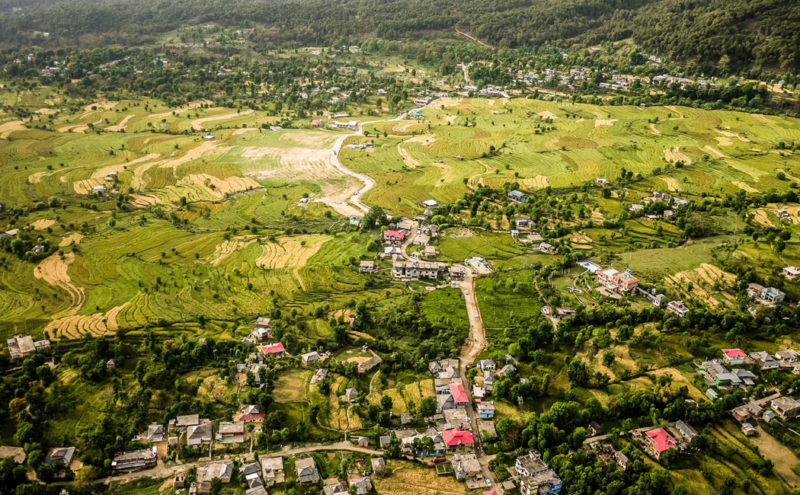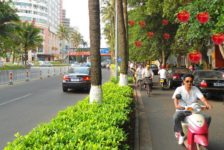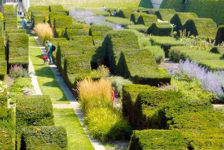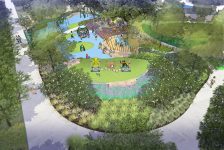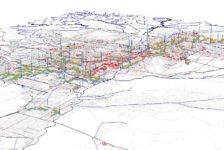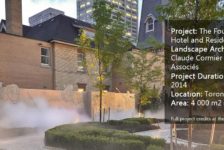Article by Jeanne Connolly – We explore 10 cities that are reinventing their relationship with nature and creating better places to live. Over the past decade an environmental movement has taken over the world in an attempt to restore the natural environment and prepare for the extreme effects of climate change. Major cities are turning to nature as a strategy to adapt, and are racing to prepare before the storms strike. Why the emphasis on nature? Healthy ecosystems regulate the climate naturally, and reduce our vulnerability to the damaging effects of climate change. That being said, strengthening the relationship with nature will strengthen the resiliency of our cities. Traveling to 10 cities around the globe, we look at how a strong relationship with nature has helped them to become some of the most sustainable cities in the world!
1. Cape Town, South Africa
As a coastal city, Cape Town is especially vulnerable to climate change effects such as extreme weather and sea-level rise. To combat this as well as reduce their carbon footprint, the city developed an “Energy and Climate Change Action Plan,” emphasizing the use of renewable energy and conservation of green space. With an estimated 290 square inches of green space per person, Cape Town ranked well above average in the land use category of the Economist Intelligence Unit’s (EIU) “African Green City Index (2012).” Valuing their land and recognizing the importance of nature in the city’s ability to adapt to climate change, ecosystem mapping is used as an important strategy to identify and protect natural ecosystems. Some of their renewable energy strategies also include solar and wind farms and installing solar water heaters.

Kirstenbosch’s Tree Canopy Walkway. Photo credit: Adam Harrower
– The natural environment of Cape Town is abundant with biodiversity, and is known for their extraordinary nature reserves, containing some of the rarest plant species in the world. At the Kirstenbosch Arboretum visitors can explore and observe some of the world’s most endangered plant species while walking along Mark Thomas Architects’ serpentine Tree Canopy Walk. This creative walkway is made out natural wood and lightweight steel, providing for the future growth of plants and placed so it is barely touching the preserved canopy.
2. Singapore
Fresh water is essential to both our health and in maintaining a healthy natural ecosystem. This can be problematic in cities like Singapore where there is a lack of access to it. To overcome this, the city developed a water purification strategy called “NEWater.” Singapore’s innovative strategies and policies towards improving the natural environment are part of what makes it Asia’s Greenest City, ranking highest overall in all environmental categories on EIU’s “Asian Green City Index (2012).” Environmental initiatives such as Singapore’s “Centre for Liveable Cities (CLC)” also contribute to the continuation of a green city, with their overall vision, “to distil, create and share knowledge on liveable and sustainable cities.”
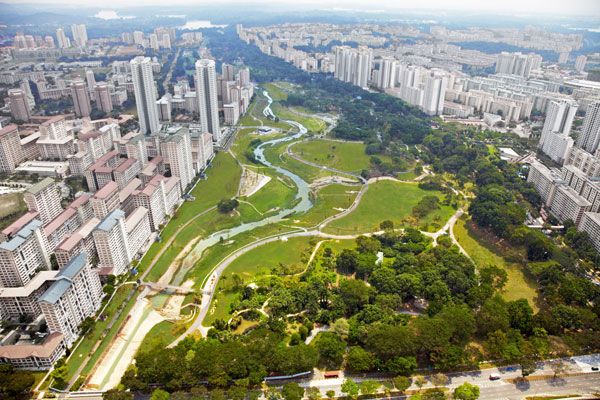
Bishan Park. Photo courtesy of Atelier Dreiseitl.
– Displaying a lush and healthy ecosystem within Singapore, Bishan Park, designed by Atelier Dreiseitl is a rich natural ecosystem located right in the heart of Singapore. The naturalized river is an important aspect of the park that helps reduce the urban heat island effect and is a safe place where people can just step on in. Imagine that lunch spot during a tough work day in the office!
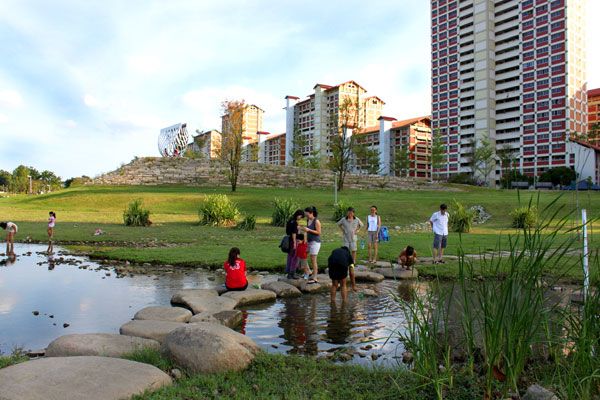
Bishan Park. Photo courtesy of Atelier Dreiseitl
Hong Kong; a hub for trade, economy…and green space? Yes, most of its residents live within walking distance of parks, hiking trails, public gardens and other forms of green space. This doesn’t make it a surprise that one of the city’s strongest environmental categories on EIU’s “Asian Green City Index (2012)” is land use. Nature conservation is a centerpiece in Hong Kong’s city policies and plans for the future. This helps to protect and manage nature, as well as ensure the continuation of community access to it.
Landgrab City – Urban Farm – To involve the community and create environmental awareness, initiatives are also taking place in Hong Kong. Landgrab City Urban Farm, designed by architects Joseph Grima, Jeffrey Johnson, and Jose Esparza is a unique installation that gives the urban community awareness of the overlooked world of agriculture that is needed to keep cities alive. The design includes a map of the downtown area, and a parcel of cultivated land built to the same scale needed to provide enough food for the population living within the area on the map.
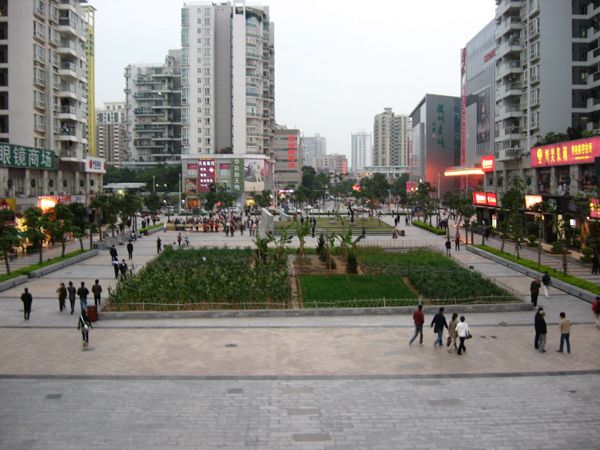
Landgrab City copyright : Shenzhen Biennale of UrbanismArchitecture Organizing Committee
4. Sydney, Australia
The city of Sydney has created a vision called the “Sustainable Sydney 2030,” with plans to become as “green, global, and connected as possible by 2030.” Sydney’s “Greening the City” and “Urban Ecology” action plans are two strong parts of the overall plan, and are important in creating a stronger relationship with nature. Part of the “Greening the City” vision is planting more trees all over the city, eventually growing into a canopy that is 50% larger than it already is. This could eventually cool the city temperature by 2 degrees Celsius, and benefit community health through cleaner air. “Urban Ecology” aims for biodiversity of plants and animals. This promotes the creation of more parks, wetlands, gardens, and plant life throughout Sydney.
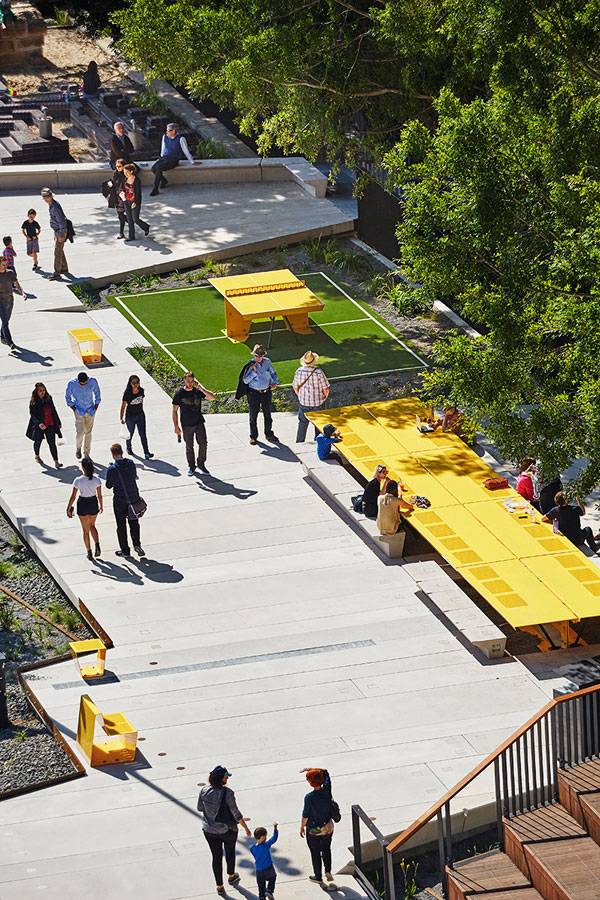
The Goods Line. Photo credit: Florian Groehn
– Planting more trees one project at a time, The Goods Line, designed by ASPECT Studios, connects Devonshire Tunnel under Central Station, Chinatown, and Darling Harbour. From an industrial site to a breathable green space, the site re-utilizes a former rail corridor, connects the space, and brings Sydney one project closer to the green, global, and connected future city of 2030.
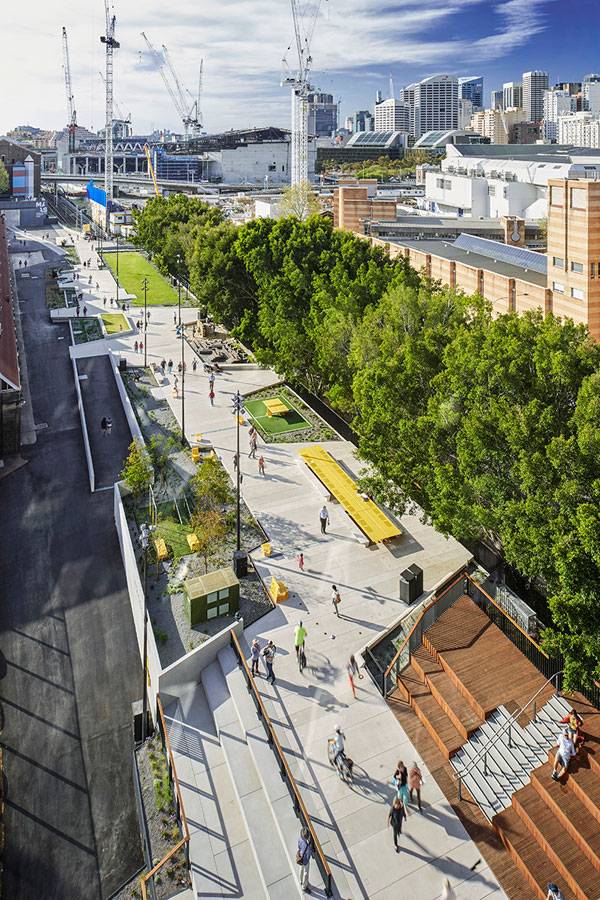
The Goods Line. Photo credit: Florian Groehn
5. Stockholm, Sweden
Stockholm was the first city that the European Commission named as a European Green Capital in 2010, and serves as a role model for Sustainable cities. Ranking 1st in the buildings and transportation categories of EIU’s “European Green City Index (2012),” the city placed an extra tax on vehicles that drive within the city in order to cut down on car emissions which are harmful to the environment. This effectively reduced car emissions and increased more active lifestyles through biking and walking. The city is committed to energy efficiency, a healthy environment, and a healthy community.

Royal Neighbour. Image courtesy of ADEPT
, to be fully developed by 2030, is an example of Stockholm’s effort in creating energy-efficient communities with access to nature. Developed through a design competition by ADEPT and Mandaworks, Royal Neighbour is going to be one of the largest sustainable neighborhood developments. Trees and vegetation are woven throughout the urban community, connecting the people with water, parks, and vegetation throughout the streets. Goals for the area include cutting back on carbon emissions, so that there are less than 1.5 tonnes per person by 2020. By 2030, Stockholm also hopes for the Royal Seaport to be fossil-fuel free!
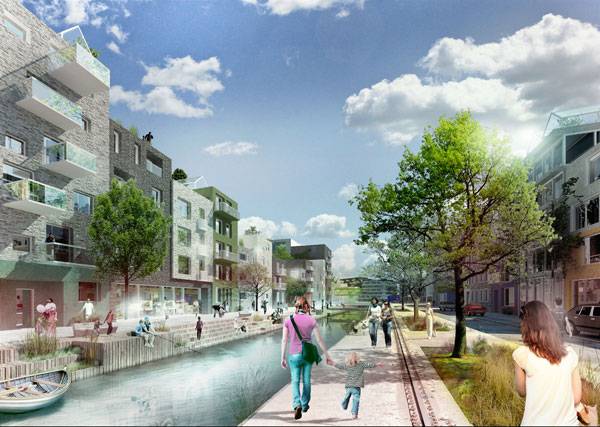
Royal Neighbour. Image courtesy of ADEPT
Named the European Green Capital in 2014 by the European Commission, Copenhagen’s environmental plan is highly ambitious with a goal to be carbon-neutral by 2025. Ranking 1st overall in Europe on EIU’s “European Green City Index (2012)”, environmental governance and community have been the strongest tools toward their goals.
As Ritt Bjerregaard, major of Copenhagen said, “
Campaigns to motivate lifestyle change are an important tool. We are also working hard to involve the citizens in developing solutions to the problems.”
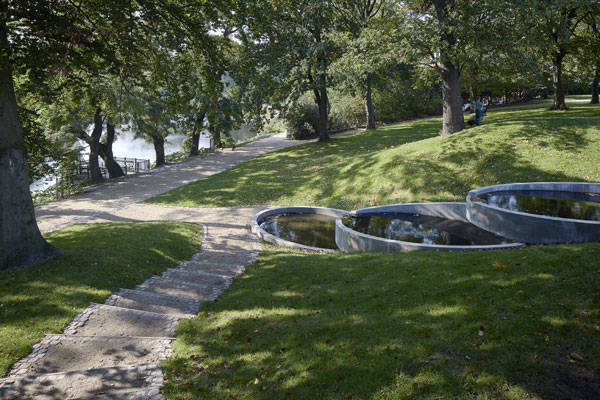
Israels Square by COBE in Copenhagen, Denmark. Photo credit: Sweco Architects
and H.C. Orsteds Park – Israel’s Square, designed by COBE Architects creates an open space of activity between the busy market and the inviting urban forest within H. C. Orsteds Park. In combination these spaces benefit active life styles, environmental health, and biodiversity. Together they provide a little something for everyone amongst nature in the midst of a busy part of town.
7. Oslo, Norway Another European city with ambitious sustainability goals, Oslo has been aiming to reduce CO2 emissions by 50% between 1990 and 2030, and greenhouse gas emissions by 95%! The city ranks 1st in both the Energy and CO2 Emissions categories on EIU’s “European Green City Index (2012),” largely due to their use of alternative and renewable energy sources and efficient energy policies. In order to also achieve climate resiliency, Oslo has developed a “Climate Change Adaptation Strategy.” According to the Oslo City Council, “The development of green spaces that effectively improve storm water management will be a key instrument.” Oslo uses the implementation and preservation of nature as a way to manage and regulate healthy ecosystems.
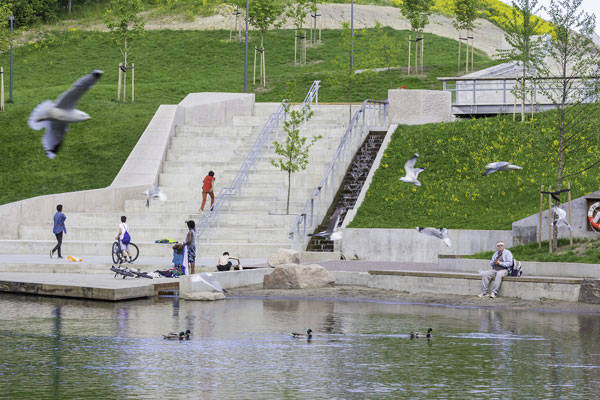
Grorudparken by LINK Landskap. Photo credit: Tomasz Majewski
, designed by Link Arkitektur, shows a project in Oslo aiming to combat flooding and improve water quality through the use of natural elements. To do this they used a strategy called fytosanering, which employs vegetation to absorb toxins from contaminated soils, cleaning the soil within 2-3 years. Biological treatment plants were also used to clean stormwater before it drained into the site.
8. San Francisco, California Starting as the founding place of the “Sierra Club,” San Francisco has been an environmental haven for years and has topped off every city in North America overall on EIU’s “US & Canada Green City Index (2012).” What makes San Francisco the greenest city in North America? An environmental act San Francisco is widely known for is their distinguished emphasis on recycling and “Zero Waste” policy. Residents are required to separate their recyclables, compost, and landfill trash. The policy must be effective, because they recycled 72% of their waste in 2009! What does recycling have to do with nature? By reducing landfill, energy consumption, and air pollution through recycling, it reduces elements toxic to nature. This in turn provides for healthier environmental growth, a healthier community, and a cleaner living environment.
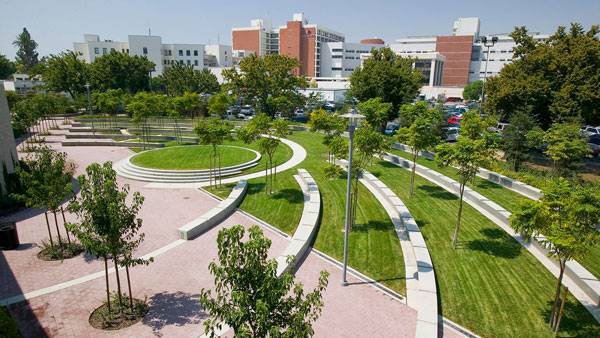
University of California San Francisco Regional Medical Center. Photo Credit: Tom Fox
The California Academy of Sciences, designed by Renzo Piano is the only facility to earn an LEED Platinum certification, which is the highest level of sustainability. Located within Golden Gate Bridge Park, the sculptural green building’s living roof extends across 2.5 acres! The concept was literally to lift the land up and place a building underneath it, creating both a natural and dynamic sustainable masterpiece.
9. Vancouver, Canada
Vancouver, the birthplace of Greenpeace in 1970, has kept up with its environmental legacy, ranking 2nd overall on EIU’s “USA & Canada Green City Index (2012).” Vancouver’s “Greenest City Action Plan” aims to make Vancouver a global leader in urban sustainability. The 3 main overarching goals of the plan are: zero carbon, zero waste, and healthy ecosystems. Each area has a set of goals for 2020, including “to ensure that every person lives within a 5-minute walk of a park, greenway, or other green space.”(City of Vancouver)
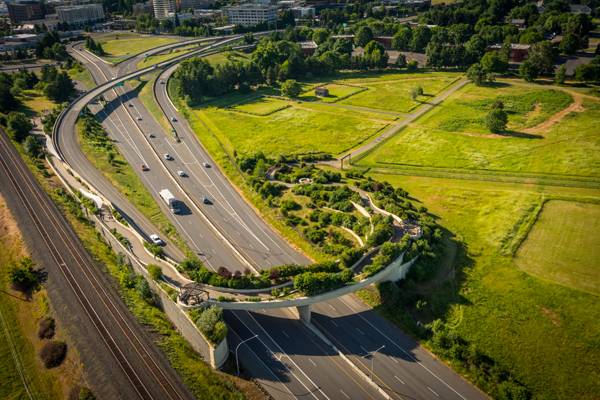
Aerial shot of Vancouver landsbridge. Photo credit: Bruce Forster
e, designed by Jones & Jones Landscape Architecture displays the importance of access to nature in Vancouver. This iconic design feature is a natural pedestrian walk of native plants that extends the existing natural landscape and connects the Old Fort Vancouver with the Columbia River. With a careful selection of vegetation, you will find yourself walking through several different habitats. Here, the natural environment not creates historical connections, waterfront access, and a safe pedestrian crossing over the highway.
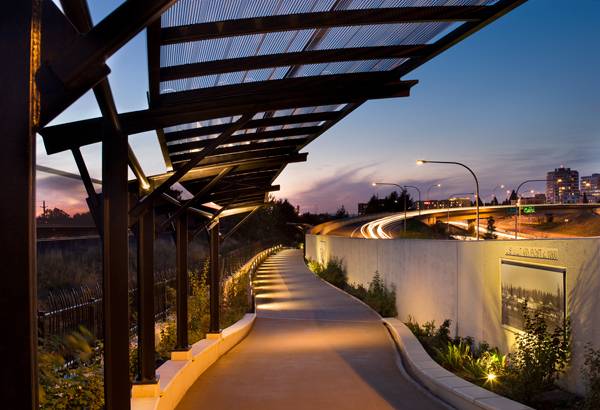
Vancouver Land Bridge. Credit: Lara Swimmer
At the 5th UCLG World Congress in Bogata, city officials launched the “Public Space Policy Framework,” including a Natural Environment and Sustainability section addressing the importance of public green space and that it is essential in maintaining a sustainable and resilient city. The utilization and creation of public green space was recognized as an important strategy in adapting to climate change and improving public health.
As quoted from the UCLG Committee on Urban Strategic Planning, “
A good network of open green public spaces, when well-designed and well-managed, have the ability to combat urban heat islands and their impact on the urban microclimate phenomenon.”
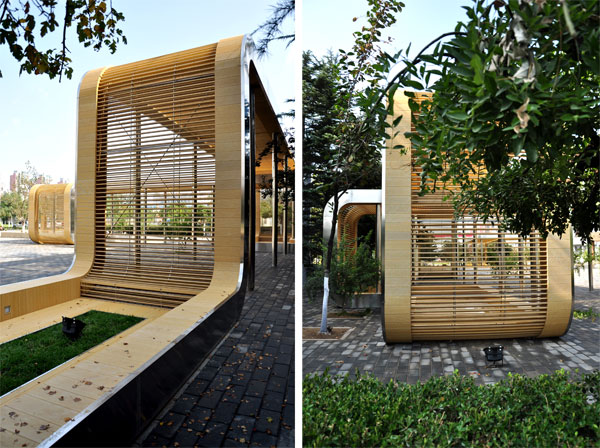
Mixed use at Bogotá Centro Administrativo Nacional . Credit: OMA
(CAN) – As a part of Bogota’s urban designing framework, designers must leave a certain amount of green space for more parks around homes. Hence the masterplan for Bogota’s Centro Administrativo Nacional (CAN) includes a green spine linking all of the zones together, creating a harmony of green space throughout government, residential, educational, retail, and cultural developments.
What Else is Going to Make Our Cities More Resilient?
We have seen that nature is an essential part of the rich system that makes up cities, but so is community involvement. Strong communities and environmental initiatives were a strong key to the success of each of these cities. The smallest actions of good can create a big impact in the long term, as we have seen in San Francisco through the simple act of community recycling. Think about the city you live in, what could improve your community’s connection with nature? Think simple; is there something small you can do to begin the domino effect of long-term change?
CLICK TO COMMENT
Recommended Reading:
Article by Jeanne Connolly
Published in Blog















